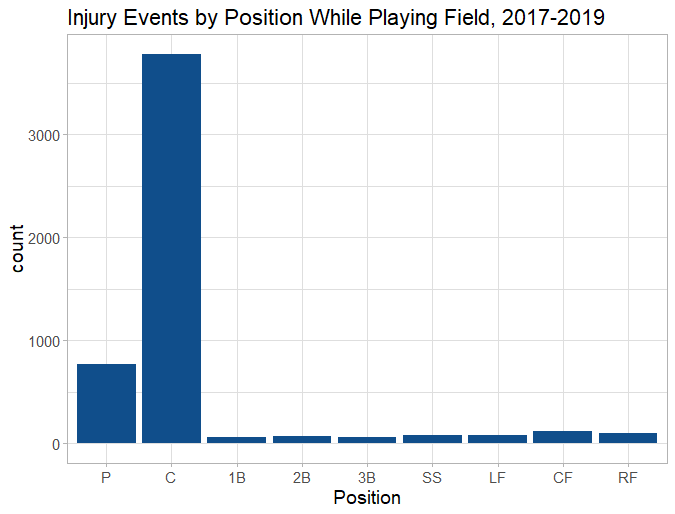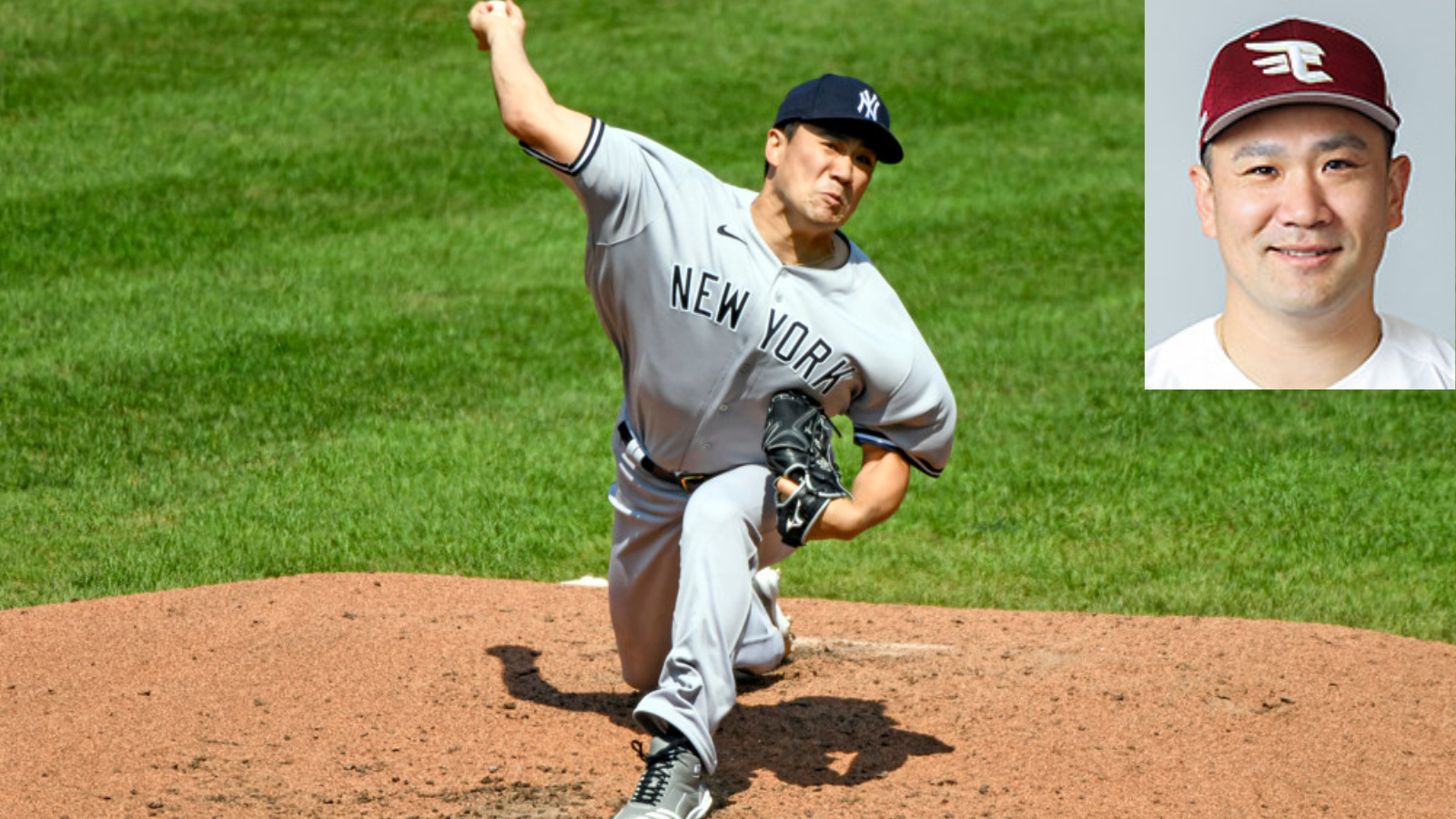By TED BAARDA
As the Korean Series is under way and their off-season around the corner, now is a good time to look at some players who could make the jump to MLB. Today we will look at three outfielders who had big seasons in Korea and could draw MLB interest in the coming weeks.
Mel Rojas Jr.
Mel Rojas Jr. had a breakout season in 2020, narrowly missing out on a Triple Crown and leading his team, KT Wiz, to its first playoff appearance. Rojas led all KBO hitters with 47 HR and 135 RBI (9 HR and 11 RBI ahead of the next closest players). He finished third in batting average at .349, 5 points back of league leader Hyung-woo Choi.
| Season | AVG | OPS | HR | BB% | K% |
| 2017 | .301 | .911 | 18 | 6.3 | 22.1 |
| 2018 | .305 | .978 | 43 | 11.0 | 22.0 |
| 2019 | .322 | .911 | 24 | 8.5 | 20.8 |
| 2020 | .349 | 1.097 | 47 | 10.4 | 21.0 |
Rojas Jr. has turned himself into the best hitter in the KBO. In addition to his traditional stats he has also ranked at the top of our leaderboard for Hard Hit Rate throughout the year.
A rare switch hitter in the KBO, Rojas uses a leg kick timing mechanism to start his swing, and has quick hands and a level swing that allows him to square the ball up. He is also able to cover the entire strike zone, slashing liners on pitches up, and going down to elevate pitches at the bottom of the zone.
Rojas does have some swing and miss in his approach, likely because he is selling out for hard contact. This works in the KBO as most pitchers don’t feature elite velocity or wipeout breaking pitches. In an appearance on the SIS Baseball Podcast when asked about facing nasty sliders in the KBO, Rojas Jr. responded, “Nasty sliders? [There are] not very many, but they do have some nasty forkballs here.”
In MLB Rojas Jr. may need to adjust his approach to counter the higher velocity and better breaking balls that he will face.
Defensively Rojas Jr. can cover center field in a pinch, although he is probably more of a corner outfielder at this point. In 2019 he dealt with an ankle injury, which he talked about in that podcast interview, which limited his range and ability to field balls. Since the beginning of 2019 Rojas Jr. has moved from playing primarily center, to more time in the corners and at DH for the Wiz. As a former center fielder Rojas Jr. has good instincts in the outfield, can track balls well, and has a good arm.
Rojas Jr. does not rate exceptionally in baserunning. Despite having decent speed before his ankle injury, he never developed good base-stealing instincts. In his KBO career Rojas Jr. has gone 27-for-53 in stolen base attempts, and largely stopped attempting steals in 2020, with just one unsuccessful attempt. In MLB, against catchers with quicker releases and stronger arms, I would guess Rojas Jr. won’t be doing any basestealing, though his speed is still fine and he will not be a base-clogger when he gets on.
Overall, Rojas Jr. projects as a starting-caliber corner outfielder, along the lines of a Lourdes Gurriel Jr., though Rojas Jr. is a switch hitter. Similar to Gurriel Jr., Rojas Jr.’s success will likely be reliant on his batted balls finding holes and dropping in for hits, and on his ability to control his strikeout rate. These characteristics may end up making Rojas Jr. a streaky hitter.
I believe that the 30-year-old Rojas Jr. should be able to contribute to a MLB team for the next few seasons but he will need to find an organization that believes in him and is willing to give him a chance, a la what the Giants did with then 28-year-old Mike Yastrzemski in 2019.
Sung-bum Na
Sung-bum Na is a power hitting right fielder and DH for the NC Dinos who is coming off a career year with a personal-best 34 HR, which is even more impressive when you consider his background. Early in 2019 Na suffered a severe knee injury. which required him to be removed from the field in an ambulance, undergo surgery, and miss the remainder of the year rehabbing.
| Season | GP | AVG | OPS | HR | BB% | K% |
| 2017 | 125 | .347 | .999 | 24 | 8.6 | 20.7 |
| 2018 | 144 | .318 | .899 | 23 | 7.1 | 21.1 |
| 2019 | 23 | .366 | 1.088 | 4 | 11.3 | 24.5 |
| 2020 | 130 | .324 | .986 | 34 | 8.4 | 25.3 |
Na sets up with a slightly open stance and uses a leg kick to square himself up to the pitcher and start his swing. He follows through with a vicious uppercut swing that enables him to elevate the ball no matter where it is pitched. Na’s best tool is his power, but he also has consistently hit as a pro, with batting averages well north of .300 in every year since his rookie season.
Offensively Na looks like he hasn’t missed a beat since returning, although defensively he was limited to more DH appearances than in previous years. In 2019 he played all of his games in the field, with 18 starts in center and 5 in right. In 2020 he played in the field in only 50 of his 130 games. While he may be playing it safe since suffering the injury, Na’s speed and athleticism has also been limited since returning. His plus defensive attribute is his arm, as Na was a pitcher through his collegiate days before converting to a full-time position player as a pro. Defensively he is a corner outfielder/DH with below-average range and a good arm at this point.
The knee injury also robbed Na of his speed on the bases. While he was never a burner on the bases, he attempted 24 steals in 2017 and 17 in 2018. In 2020 he only attempted 4 steals which again suggests a loss of speed and there was a visible difference in how he ran early in 2019 versus in 2020.
Overall Na is likely a platoon corner outfielder/DH, though given his knee issues a team may try to play him at first base too if they need him to play in the field. Na could be compared to his former teammate with the Dinos, Eric Thames, as a lefty platoon bat who can line up in the corners.
Preston Tucker
Preston Tucker was a 7th round draft pick by the Houston Astros in the 2012 MLB Draft. Coming from a SEC school (Florida), where the competition level is the best in all of NCAA baseball, Tucker was able to quickly climb through the minor leagues and reached AAA less than two years after his professional debut.
Tucker made his MLB debut in 2015 and put together an encouraging season, hitting .243/.297/.437 in 323 plate appearances for the Astros. His 2016 MLB cameo was less fruitful and he took a step back in Triple-A in 2017. By 2018 Tucker was bouncing around the league, and losing playing time between transactions and stints on the bench. During the 2019 season he was released by the White Sox in order to be able to sign with the Kia Tigers, where he has played the last two seasons in the KBO.
| Season | Level | PA | AVG | OPS | HR | BB% | K% | ISO |
| 2018 | AAA | 71 | .246 | .601 | 0 | 2.8 | 9.9 | .087 |
| 2018 | MLB | 184 | .229 | .703 | 6 | 7.1 | 23.4 | .175 |
| 2019 | AAA | 93 | .277 | .754 | 1 | 9.7 | 7.5 | .133 |
| 2019 | KBO | 399 | .311 | .860 | 9 | 9.5 | 11.0 | .168 |
| 2020 | KBO | 631 | .306 | .955 | 32 | 12.0 | 10.6 | .251 |
The lefty-swinging Tucker sets up with a slightly open and crouched stance. He uses a small leg kick to start his swing and he follows through with a slight uppercut. When he is going well, Tucker slaps line drives from gap to gap and can pull fly balls to right, up and out of the park.
The biggest unknowns about Tucker are if the power jump he showed in the KBO this season is sustainable, and if he can adjust to big league velocity and breaking balls. Playing in the KBO has likely given him plenty of exposure to good off-speed pitches, but the fastballs and breaking balls in MLB are of a higher quality.
On defense, Tucker still has some room for improvement. He looks stiff patrolling the outfield and does not have great speed to track down balls, and defensive metrics were not fans of his work in the Majors. His good arm allows him to play right field in Korea, though it would play closer to average in MLB. On the bases Tucker is not much of a threat to impact a game, as his lack of speed limits his ability to steal bases (0-for-2 in the KBO) or take extra bases regularly.
Tucker made some really good strides this season, but teams may want to see another year of success before they buy into his abilities. The traditional backup outfielder usually has to be able to cover center field, which Tucker can’t do. If you buy into Tucker’s power spike this year then he is a bat-first left fielder, though he could also play right field and potentially first base.
If the power shown this year does not return then Tucker is a backup corner player without power, which is not a common profile in the Majors. A team in need of outfield depth could pick up Tucker for an everyday role, though he could also return to Korea again to further cement himself as a legitimate power hitter.


